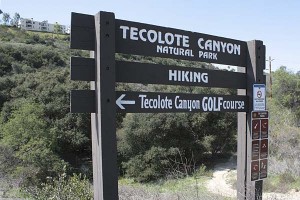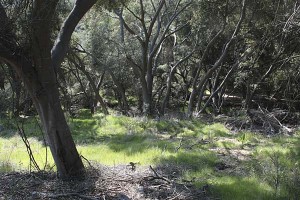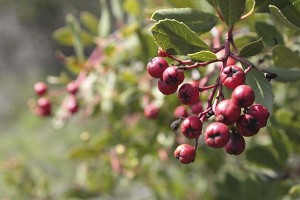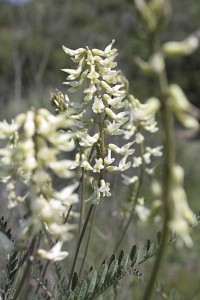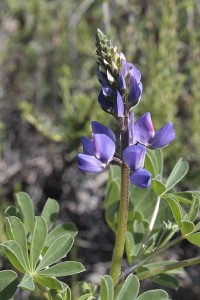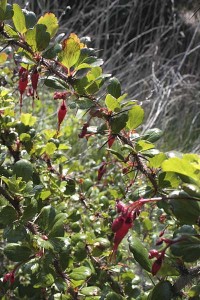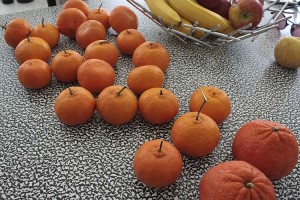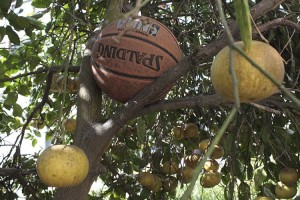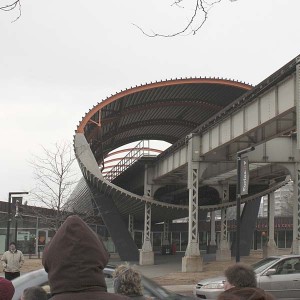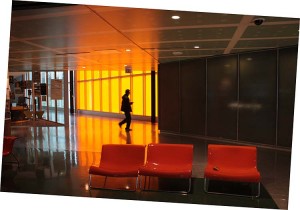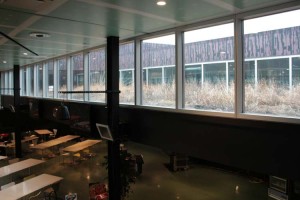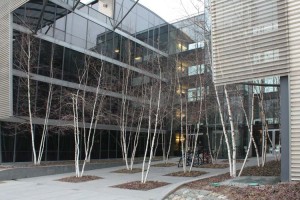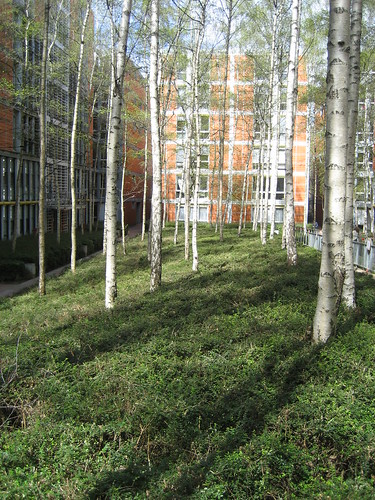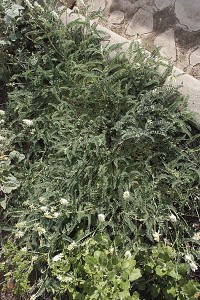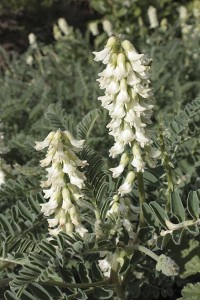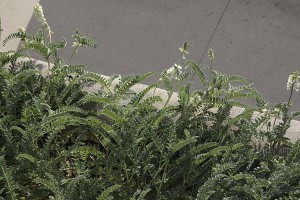There’s usually a big disconnect between going to a nursery to look at plants and going out botanizing to an open space preserve like the one I live near. The plants in a nursery will likely be the usual garden store suspects, mixed in with new introductions from all over the globe. But what plants you see in the wilds, except for escapees from residential gardens, usually have nothing to do with what you see in the nurseries.
Gardens are of course artificial places. Although people may feel connected to nature while tending their personal landscapes, it’s too often a nature that exists only at their local plant nursery and nowhere in the wild lands around them. My own garden has these same tendencies, but I’ve been trying to counteract them with more native plantings.
Things have also been changing in at least some of the nurseries around town, and there’s a gradual flow of plants from our wild areas into people’s gardens. Most of the larger nurseries offer at least a small selection of natives, and the specialty native plant nurseries can always be counted on for a selection of plants that they feel garden-worthy.
Sunday was cool but sunny, a perfect day for a short walk through my neighborhood canyon preserve to see some of these plants in their wild state. And along the way I saw a couple that I think people wouldn’t mind living with.
Tecolote Canyon–literally “Owl Canyon”–includes a city park of about 900 acres, most of it the slopes and bottoms of a coastal canyon that were too economically challenging to build on. Some of the park has been handed over to a golf course and some athletic fields, but a lot of it remains in something approaching its natural state.
The trail cuts through several stands of our coastal live oaks, shown here with lots of neon green (non-native) grasses. These oaks would be gorgeous in private gardens. Imagining opening the back door and stepping out into this. But a fungus that was imported from Europe in a shipment of rhododendrons is now making these difficult to grow in all but the most driest garden spaces.
During the winter rains a little stream runs through the park. It takes months for the water to dry up completely, so every now and then you’ll find little watering holes like this one.
Lemonade berry appears frequently in native garden plantings and is easy to find at native nurseries. The plants have been blooming in the canyon for a couple months, and they’re still blooming. This species forms a large, tidy shrub that stays an attractive dark green color year round. Later in the year it’ll develop orange-to-salmon berries in the place of the flowers. Definitely garden-worthy.
Lemonade berry performs best near the coast where heavy frosts aren’t a concern, but it can come back if frozen.
These aren’t flowers, but I think they’re pretty attractive. The toyon, also called Chrsitmas berry (Heteromeles arbutifolia) still had its berries out. This is another plant that makes an attractive large evergreen shrub in the home landscape. The leaves on this are just a little lighter green than those of the lemonade berry, and the plant more densely branched.
Toyon is a fine native substitute for holly, bearing these berries during the time of year when holly would. (And speaking of “holly would,” did you know that Hollywood got its name from big stands of this that grew on the hillsides overlooking what’s now tinseltown?) This is also one of the easier plants to find commercially.
I’ve written recently about a new groundcover milkvetch that I was trying out. A different species with somewhat similar-looking flowers was approaching peak bloom in several spots in the canyon. There are over 1500 vetch species on earth and a half-dozen in the county, but I believe this one is Astragalus trichopodus.
The flowers are small and intricate and appear on a plant that can approach three feet tall. This milkvetch dies back to nothing during the summer drought, but I think it would look great when combined with selections that have more summer interest.
The canyon hillsides are overrun with invasive mustard that is just now starting to put on its spring growth spurt. But this milkvetch gets going quicker, and actually seems to stand a chance against the black mustard menace, unlike other natives that mature later. Here you see it growing up through the trellis of dead mustard stems left over from last year.
Not having spent much time in Texas, it took me a while to figure out that Texas bluebonnets were Texas species of what I’d been calling lupines all my life. Here’s a “California bluebonnet.” In this canyon they’re more of an occasional treat than a plant that colonizes big spreads of hillside. They’re ephemeral, but would be gorgeous in a garden.
Fuchsia-flowered gooseberry is a shoulder-high shrub with a long blooming period from winter through much of spring. You can probably see from the picture that it is a little on the thorny side, something like you’d see on Victorian moss roses. But the flowers make this a striking plant in the right spot. The shiny green leaves will persist throughout the year if the plant is given an occasional summer sip of water. And did I mention “hummingbird-magnet?”
There were other native plants in bloom, including the perky scarlet monkey flower. But my trip was just a little early to catch the the peak flowering. I’ll post more as I take more trips.
And of course, in a park surrounded by human habitation, you’ll find a healthy sampling exotic species. I’ll post next on a few of my interesting but less garden-worthy encounters.

